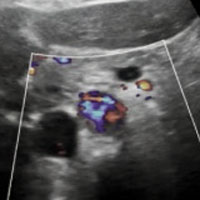The usefulness of point-of-care ultrasound in the atypical presentation of aortic dissection: a case series and brief review of literature

All claims expressed in this article are solely those of the authors and do not necessarily represent those of their affiliated organizations, or those of the publisher, the editors and the reviewers. Any product that may be evaluated in this article or claim that may be made by its manufacturer is not guaranteed or endorsed by the publisher.
Authors
Acute aortic dissection represents a surgical emergency that, in most cases, may present an atypical and non-specific clinic, making the diagnosis difficult and late. Computed tomography angiography represents the gold standard for diagnosis, but different ultrasound techniques can provide valuable additional information related to diagnosis and optimize therapy and prognostic assessment. In this case series, we describe different atypical patterns of aortic dissection associated with non-diagnostic DDimer levels. These atypical conditions escape recognized diagnostic algorithms for diagnosing aortic dissection, although the incidence of such events is far from negligible. A clinical approach in the emergency setting that provides for systematic and standardized use of bedside ultrasound could help reduce the incidence of errors and diagnostic delay, addressing the gold standard instrumental diagnostics for the reference pathology.
How to Cite

This work is licensed under a Creative Commons Attribution-NonCommercial 4.0 International License.
PAGEPress has chosen to apply the Creative Commons Attribution NonCommercial 4.0 International License (CC BY-NC 4.0) to all manuscripts to be published.






